INTRODUCTION
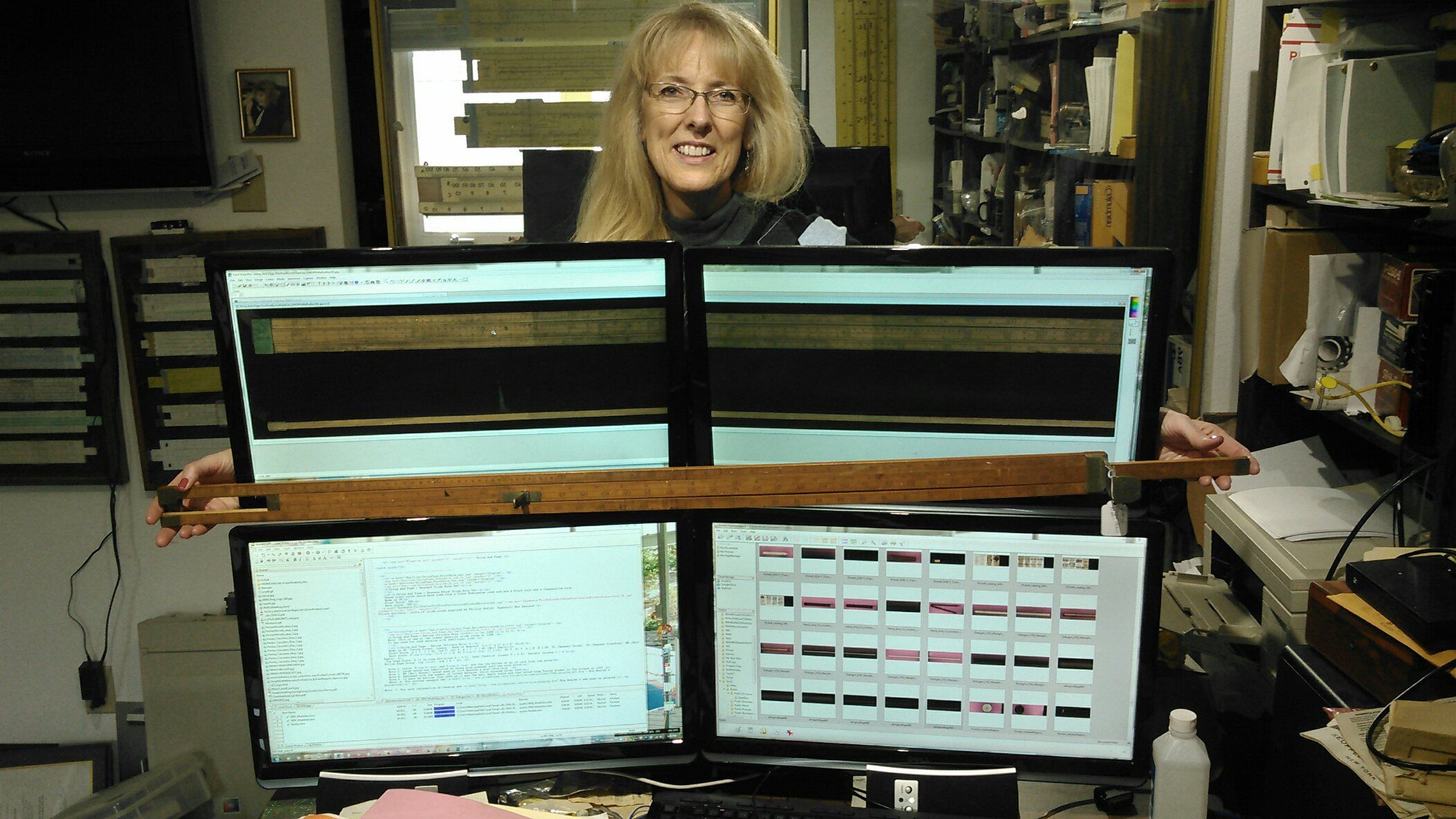
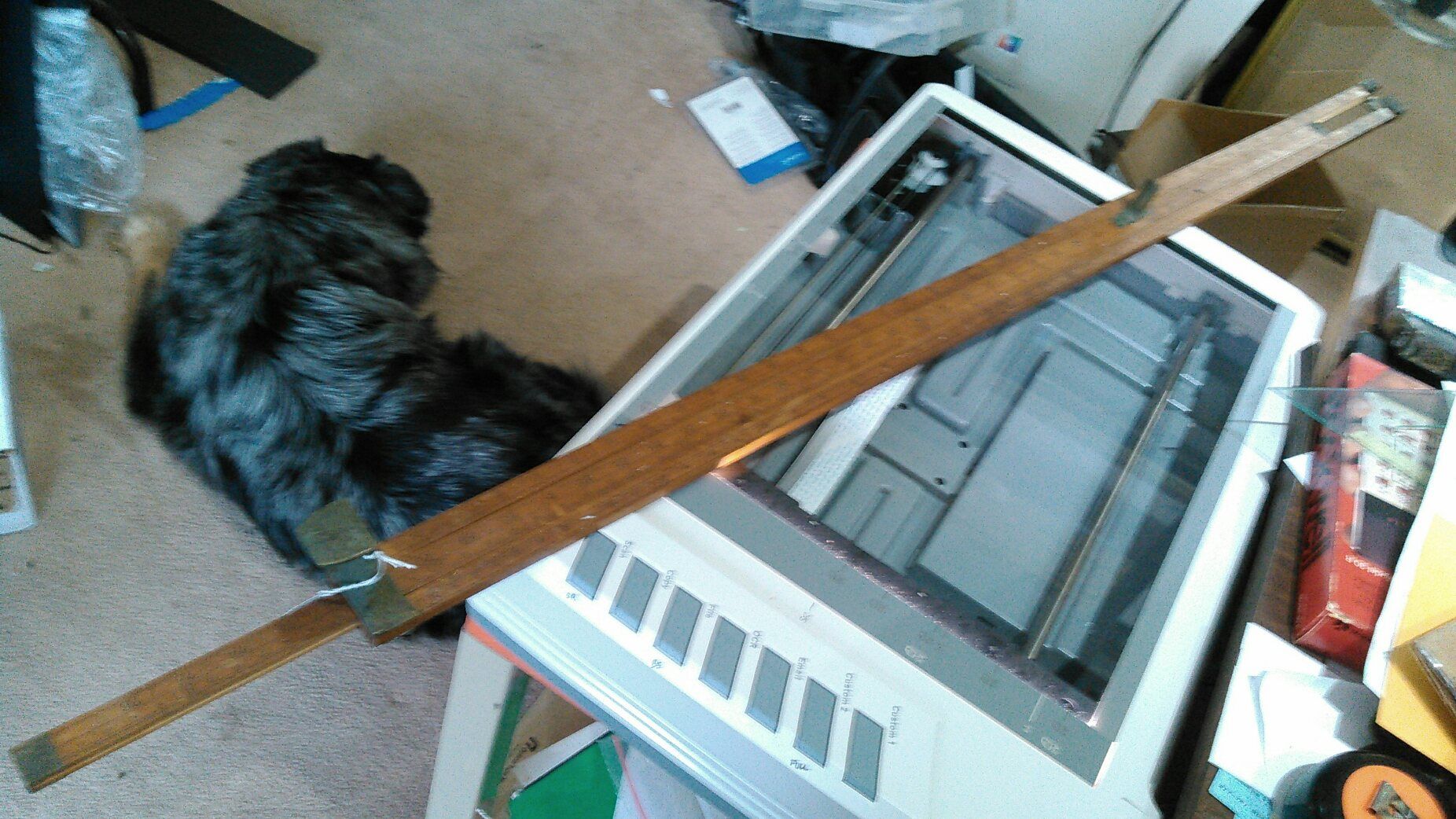
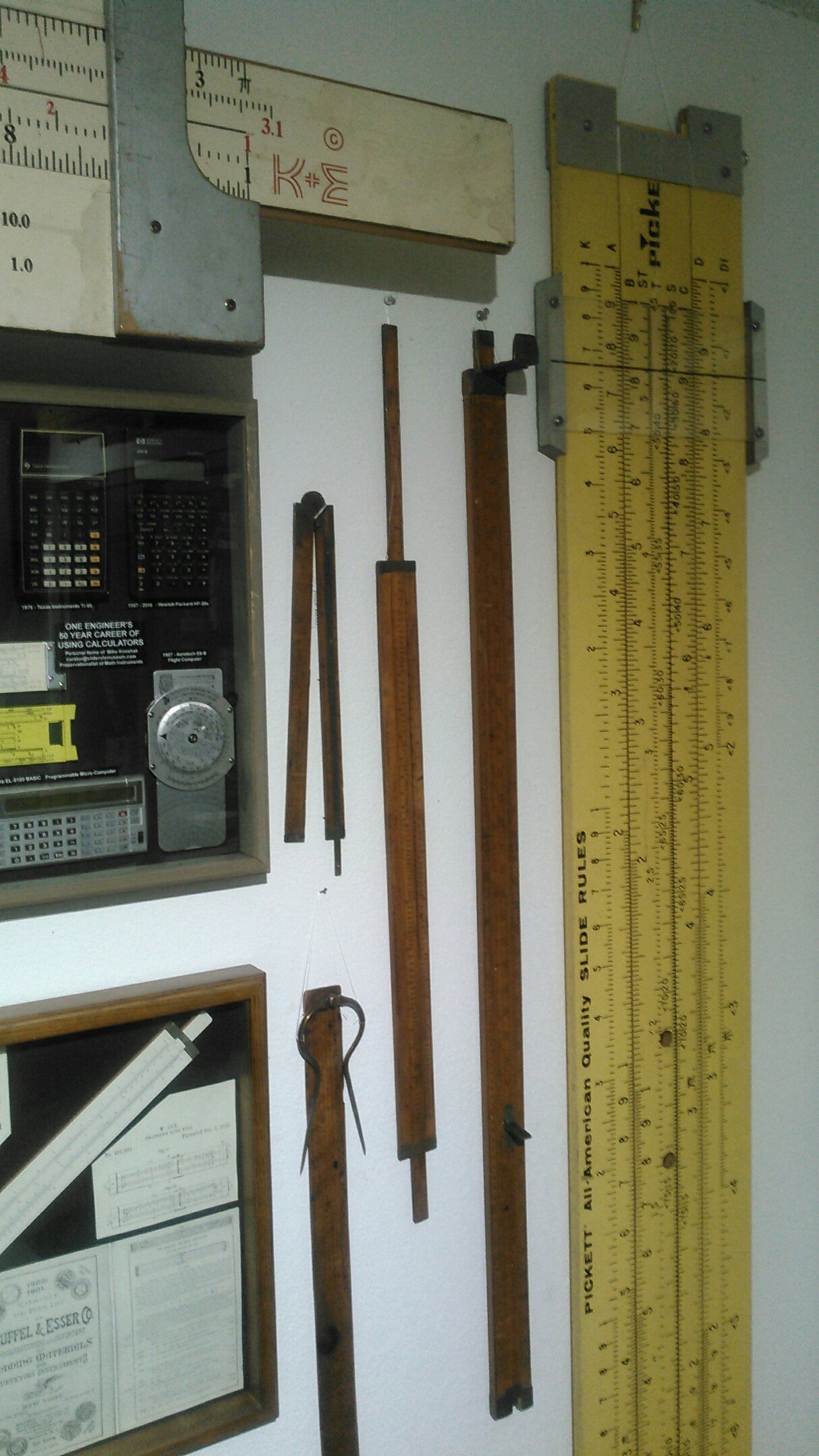 ISRM is the world's largest free digital repository of all things concerning slide rules and other math artifacts. There are over 7000 Images or PDF's in the ISRM Galleries and Libraries. The picture of Becky holding a 1903 4 foot Ding & Frage Excise rule in front of quad monitors, shows the ISRM archiving operation, and the 17" x 11-1/2" (A3) scanner that is used.
There are scans or pictures of actual slide rules and related math arifacts in the museum or provided by collectors from around the world Every specimen is
different in some way. There are over 4000 physical or virtual unique items at present dating from 1850. Duplicate model
numbers in this collection have different cursors, scales, logos or construction features. Unlike
most collectors who want pristine specimens, the museum enjoys getting slide rules that are marked
with the original engineer's name especially when we are told what work they were used for,
even if it only helped the owner get through college.
ISRM is the world's largest free digital repository of all things concerning slide rules and other math artifacts. There are over 7000 Images or PDF's in the ISRM Galleries and Libraries. The picture of Becky holding a 1903 4 foot Ding & Frage Excise rule in front of quad monitors, shows the ISRM archiving operation, and the 17" x 11-1/2" (A3) scanner that is used.
There are scans or pictures of actual slide rules and related math arifacts in the museum or provided by collectors from around the world Every specimen is
different in some way. There are over 4000 physical or virtual unique items at present dating from 1850. Duplicate model
numbers in this collection have different cursors, scales, logos or construction features. Unlike
most collectors who want pristine specimens, the museum enjoys getting slide rules that are marked
with the original engineer's name especially when we are told what work they were used for,
even if it only helped the owner get through college.
-
The prefix codes 'S0XX', 'P0XX', 'L0XX', 'MXX', etc were the original identification filing system and are not part of manufacturer's
model numbers. Slide rules with this notation are no longer part of the active ISRM collection as they were
gifted to the Computer History Museum. We would appreciate gifts of slide rules to replace these specific items.
-
The 'ISRM' prefix code means the specimen is part of the physical current collection available for public displays.
All new acquisitions or donations are given this code along with an accession number of the form YY.MM.DD.XX.
-
The 'HSRC' prefix codes are slide rule images from Herman's Slide Rule Catalogue
which are duplicated in the HSRC gallery.
-
The 'REF' prefix code denotes that this is a donated scan from an ISRM friend or other source that has
been archived on this site..
-
When you click on the pictures you will get a 150 dpi FULL SIZE SCAN (note manuals are scanned at 200 dpi)
of the slide rule.
-
Scales are listed as to the location on the slide rule. The FRONT side is arbitrarily determined by
the presence ofthe most common scales A [B, C] D.
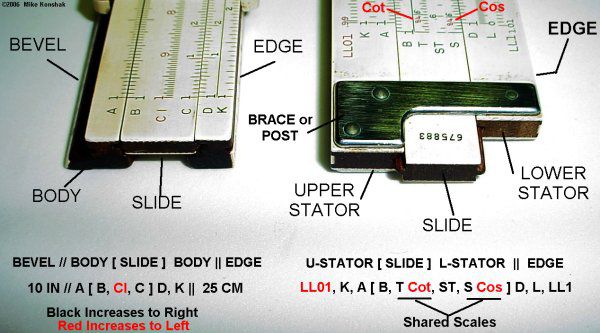
Scales are described using the above convention
This is a work-in-progress. The museum is being expanded constantly to add reference
pictures of slide rules and ephemera provided from other collections and international sources as well as from new acquisitions acquired through donations. Some scans are being supplied by other
collectors who use the site as a reference, credits are duly noted, when known. Electronic 'Slide Rule' Calculators and Abaci are the newest galleries being documented at ISRM.
Most of the scans are larger than can be fully displayed in a default browser. Microsoft
Internet Explorer 6 uses
Automatic Image Resizing to make it fit without scroll bars. To display an image at
full size in order to see more detail, change your settings by navigating to:
Tools/Internet Options/Advanced/Enable Automating Image resizing [uncheck box].
MISSION STATEMENT
This collection of mathematical artifacts has taken quite a while and expense to
accumulate and catalog. Consequently, my goal as the curator, was to not only
provide research information at no charge to the public but also assist worthwhile
educational and historical institutions in expanding their collections. So far,
recipients have been the University of Colorado, the Math History Museum of the
Smithsonian Institute, and the Computer History Museum. I also have instituted
a Slide Rule Loaner program
for educators which sends matching sets of 25 slide rules to schools for temporary
(as long as a school year) use. The slide rules are provided through the generous
abundance of collectors worldwide.
DONATIONS (GIFTS) OF SLIDE RULES
Note: Donations of slide rules are currently subject to approval, based on their usefulness
to fill the gaps within the galleries, or have significant provenance of historical figures. Please contact the curator.
If you wish to give your slide rule or your parents or relative's slide rule a bit of immortality
and especially to honor the work that was done in life, donations of slide rules (and related calculators) are eadily accepted.
However, damaged or very common slide rules may not be able to replace those in the galleries.
Please include a brief bio/profile of the owner for the display. A small portrait
may be included. Along with being displayed in the ISRM galleries, every attempt will be made to
install gifted specimens into a permanant display and in some cases re-gifted to another institution
that may be looking for similar articles. Donors are given credit with the artifact and are also listed
in the 'Friends of the Museum' page. It may take a few months
before your donation shows up in the galleries, so please be patient. We also accept collections from
slide rule enthusiests, wishing to downsize their homes, in order to preserve their artifacts.
Potential and Past donors please review the following document:
ISRM Future of Accessioning, Deaccessioning, Transfer & Disposal (.PDF) Revised 05-04-2023
|
Please contact:

1944 Quail Circle
Louisville, CO 80027
United States
 ISRM Deed of Gift Form (.pdf) ISRM Deed of Gift Form (.pdf)
 ISRM Deed of Gift Form (.doc) ISRM Deed of Gift Form (.doc)
|
MONETARY DONATIONS (GIFTS)
All the high resolution images of slide rules in the galleries and the PDF files of
scanned books, manuals and instructions have been free to download since 2003. The policy of ISRM is to
continue this practice, without restrictions in order to provide research and educational information
to the world at large. However, running a web site of this size with a large amount of data does take a
lot of time and effort and does incurr costs in hosting in order to provide the bandwidth. If you have
enjoyed the many offerings of ISRM, and would like to contribute toward its expansion, you can send
money using the Secure Paypal button on the right. All monetary contributions will be used to pay for the
web site service, support shipping for the Slide Rule Loaner Program or obtain additional items for public displays.
Thank you for your support and consideration!
Please make personal checks or Money Orders payable to: ISRM
|
To contribute
toward downloads:
KEEP ISRM FREE!
Donations are
tax deductable
|
PRIVACY STATEMENT
ISRM does not collect any information concerning any of its visitors.
In the case of Paypal transactions, only Paypal has access to your
information.
HISTORY OF ISRM
The International Slide Rule Museum began as a one-man's collection of slide rule as was shown on Michael Konshak's personal website.
As the website grew in numbers, Michael envisioned a future of having a brick-and-mortar museum, either as a standalone entity or
as part of an existing physical museum. The sliderulemuseum.com website was created in 2003 as a mechanism to began the process of fulfilling that goal.
Part of having a complete collection relies on having artifacts of that would be interesting to visitors. Many owners expressed a desire to gift rare artifacts,
but wanted the ability to deduct the Fair Market Value (FMV) of the donations on their I.R.S. taxes. In response to these requests, in 2018,
ISRM became incorporated in the State of Colorado and were given an official non-profit status by the I.R.S. and has a Board of Advisors.
ISRM, LLC is still a one-man operation with Michael Konshak as the President and Curator.and the corporation has a
board of directors with a Secretay and Friends of the Museum as a Board of Advisors.The future of ISRM is uncertain, as the hopes of the collection
to be hosted and displayed in a brick-and-mortar museum has diminished. Most likely, the best we can hope for is to preserve the images of the specimens
and maintain a virtual museum via the website, but with the intent of making the website more modern and mobile friendly. The physical artrifacts most likely
will have to be transferred or sold on a piecemeal basis. This is necessary, in part because there is a need to relocate the ISRM offices
to a part of the united States that is more conducive to the health of curator and his family. There is no plans as yet. Input is weclome.
* Hairy-Eared Engineer - definition:
1) An engineer who's old enough to have hair growing out of undesirable places.
2) Who's been
practicing engineering so long that he or she has already made all possible mistakes at least once.
3) A desirable person to have on a project to ensure the mission succeeds.
4) Quote: "Every
project needs at least one hairy-eared engineer" Marvin B. Davis -1980.
(Marvin was one
then and 34 years later, my barber can attest that I've finally made the grade).
|
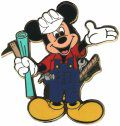
|
|

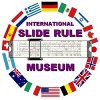 HOME
HOME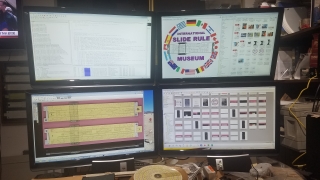
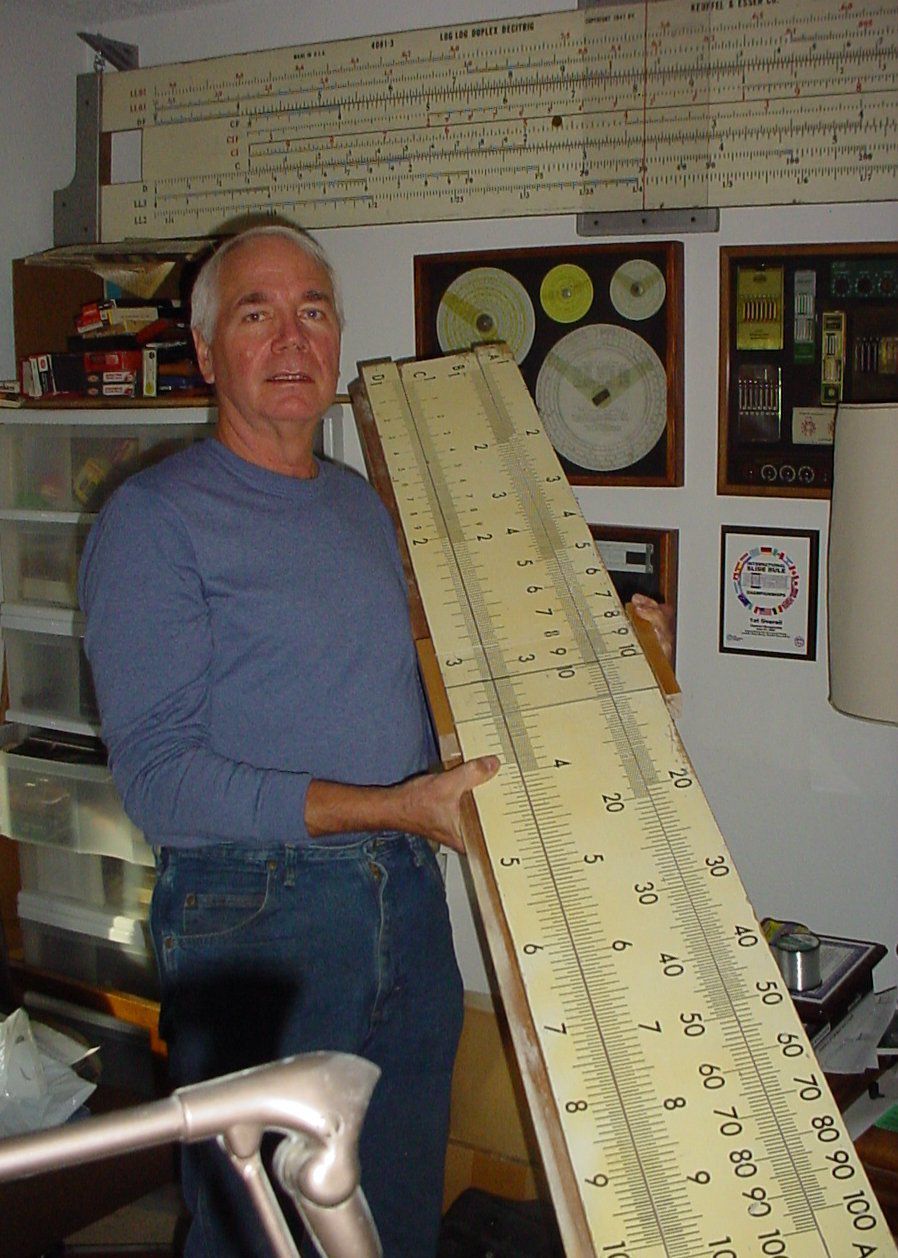
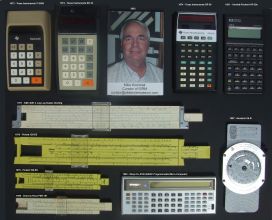
 Calculators Before The CPU
Calculators Before The CPU



 ISRM Deed of Gift Form (.pdf)
ISRM Deed of Gift Form (.pdf) ISRM Deed of Gift Form (.doc)
ISRM Deed of Gift Form (.doc)